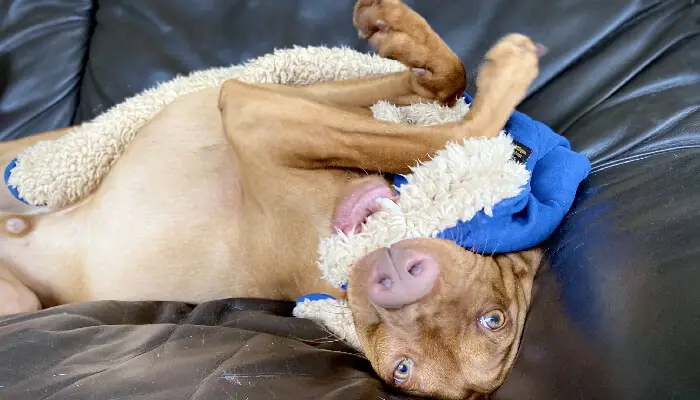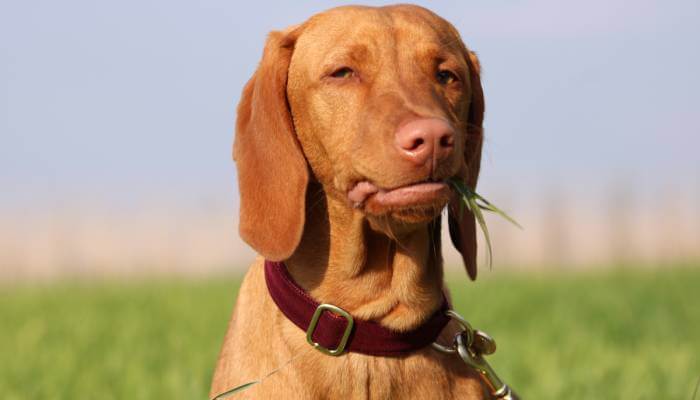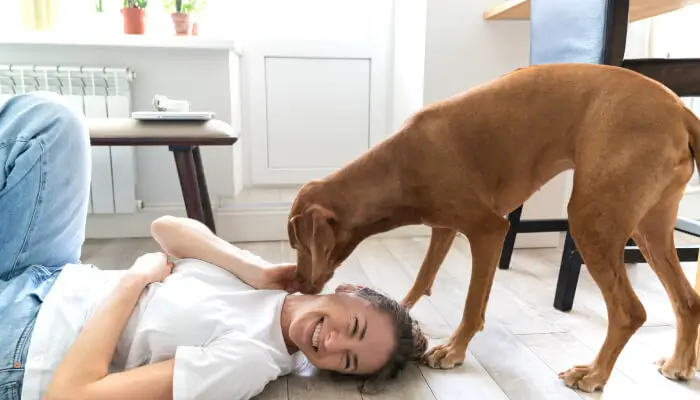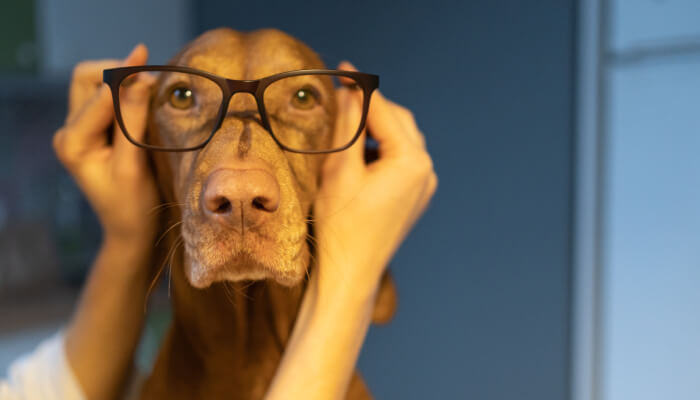Vizslas are known for their intelligence and high energy. One of the most common concerns people have about Vizslas is that they may bite or chew on things while teething. This is entirely normal for any breed of dog, but there are ways to help your Vizsla cope with teething.
Vizslas typically begin losing their teeth around five months old and starts seeing the first signs of teething at about three weeks old. Teething can be an excruciating process for dogs. The gums of puppies become swollen and inflamed. That’s why they want to chew on anything around them.
Some people worry about their puppy hurting while teething, but this is normal behavior as long as you watch your dog closely. If your Vizsla isn’t teething, you will want to consult your vet, as this may be a sign of illness.
This guide will help you understand how to recognize teething, what age Vizslas stop their teeth, and how to help your dog through this challenging process. It will also look at other factors that may contribute to biting or chewing habits while giving tips on dealing with these behaviors in the future.
How Long Do Vizslas Teething Last?
Most veterinarians say teething generally lasts about 3 to 4 months, but it depends on the puppy. My Vizsla is eight months old, and he has two teeth coming in at the same time.
Some vizsla puppies may develop their first teeth (primary dentition) at about five weeks, while others do not get their first tooth until they are 6 or 7 months old. This can be due to the timing of birth (for example, some pups born towards the end of December/beginning January), different levels and types of milk-fed, the total number of teeth that mature and erupt from the gums, as well as genetics.
Multiple factors influence this, including environments, such as a pup’s litter size- specifically if they are the only pup or not, the number of people they live with, and their interaction with them.
Can Teething Be Painful For Vizslas?
Teething can be painful for some vizsla puppies, but the pain usually subsides after a few days.
Some pups will have more discomfort than others during teething, and you may see symptoms of increased thirst or lethargy and drooling and chewing on things to soothe the gums.
If your pup does have signs of pain, you may want to speak with your vet for some tips on how to alleviate the discomfort.
What Age Do Vizsla Puppies Lose Their Teeth?
Vizslas don’t typically lose teeth until they reach adulthood- between 18 months to two years old when a pup reaches full maturity. One exception may be for puppies about 18 months old that have been spayed or neutered and lost their canine teeth.
Will Vizslas Bite While Teething?
Vizslas may be more apt to bite while teething than they would usually, so owners need to know how to manage this behavior.
You can give your pup a chewable toy that is hard and textured. This will help provide relief for your pet’s gums while allowing them to release some of their energy without destroying your house!
How Can I Stop Biting And Chewing Of Vizslas During Teething?
You can give interactive toys, give chewable toys to Vizsla, and provide a variety of foods and treats for them. You can also try giving your pup something they enjoy as an alternative source of chewing relief, such as rawhide or bully sticks!
Give Interactive Toys
Interactive toys like treat-dispensing toys, food puzzle feeders, and squeaky or plush toys are all great for pups to play with during teething. You need to take care of Vizsla puppy properly during these process.
Give Chewable Toys To Vizsla
You must give chewable toys to your pup so they can still satisfy their urge to chew even if it’s not your furniture. However, be mindful of the type of toy you give your pup, as some toys may not be safe for their teeth and gums. You can get a variety of chewable toys at most pet stores- make sure to read up on the safety before buying one!
Provide a variety of safe items for your pup to chew on, such as stuffed animals, rawhide or bully sticks, kongs filled with peanut butter, frozen wet towels (that you have pre-cooled in the freezer), and plenty of good quality dog food.
Some pups need something to chew on while their teeth are coming in and will eventually grow out of this behavior when they have all their adult teeth. Others may continue to chew because it releases endorphins that make them feel better, so for these puppies, you can try giving them a specialized toy to chew on.
Give Rawhide or Bully Sticks
You can also try giving your pup something they enjoy as an alternative source of chewing relief, such as rawhide or bully sticks. However, please do not give a puppy something they aren’t ready for, such as bones or rawhide, making them more likely to bite and chew because of the pain.
Provide A Variety Of Foods And Treat
Giving your pup plenty of good quality dog food during teething will also help with their discomfort- high meat content foods like chicken which is easier to digest, may be easier for them.
Conclusion
Summing up, Teething is the time when Vizsla puppies lose their baby teeth and grow adult ones, it can be painful for them so you should help your pup get through this time with teething toys and chewable items. Before the teething stage is over, your dog will start to lose its baby teeth and grow adult ones. Try giving chewable items for dogs or toys with treats inside so you can distract their attention from chewing furniture etc. Every dog is different and has a unique teething timeline. It will take some trial and error to figure out what works best for your pup, but with patience, you can make the process as painless as possible!



